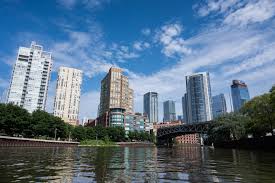Chicago’s Silent Descent: Experts Warn of Accelerating Land Subsidence Threatening Infrastructure
Chicago is experiencing a gradual yet concerning phenomenon: the ground beneath the city is sinking at a rate faster than many other U.S. cities. This subsidence poses significant risks to infrastructure, including buildings, roads, and bridges, and is exacerbated by both natural and human-induced factors.

Multiple Factors Contributing to Chicago’s Sinking
A comprehensive study published in Nature Cities highlights that Chicago is among 28 major U.S. cities undergoing land subsidence, affecting approximately 34 million people nationwide. The primary driver identified is excessive groundwater extraction, accounting for about 80% of the observed sinking. Other contributing factors include the weight of urban structures, tectonic activity, and glacial isostatic adjustment—a process where land previously compressed by glaciers slowly sinks after the ice has melted.
Specifically, Chicago and parts of southern Lake Michigan are sinking approximately 4 to 8 inches per century due to this post-glacial adjustment.
The Role of Underground Climate Change
Adding to the complexity is the phenomenon of “underground climate change.” Research from Northwestern University reveals that heat emitted from buildings, subways, and underground infrastructure is warming the ground beneath Chicago’s Loop district. This heat causes the clay-rich soil to contract, leading to gradual but continuous settlement of building foundations.
Temperature sensors installed throughout the Loop have recorded underground temperatures up to 10°C higher than those in nearby Grant Park, an area devoid of dense infrastructure. This temperature disparity results in the ground swelling by as much as 12 millimeters and buildings sinking by up to 8 millimeters.
Implications for Infrastructure and Urban Planning
The uneven nature of subsidence can strain foundations, crack pavements, and exacerbate flooding, particularly in low-lying areas. Approximately 29,000 buildings in affected cities are already at risk from such differential subsidence.
Experts warn that without proactive measures, the integrity of Chicago’s infrastructure could be compromised. Recommendations include implementing sustainable groundwater management practices, enhancing building codes to account for subsidence, and utilizing technologies like thermal insulation to mitigate underground heat emissions.
As Chicago continues to grow and develop, understanding and addressing the multifaceted causes of land subsidence will be crucial to ensuring the city’s resilience and the safety of its residents.


Comments are closed, but trackbacks and pingbacks are open.